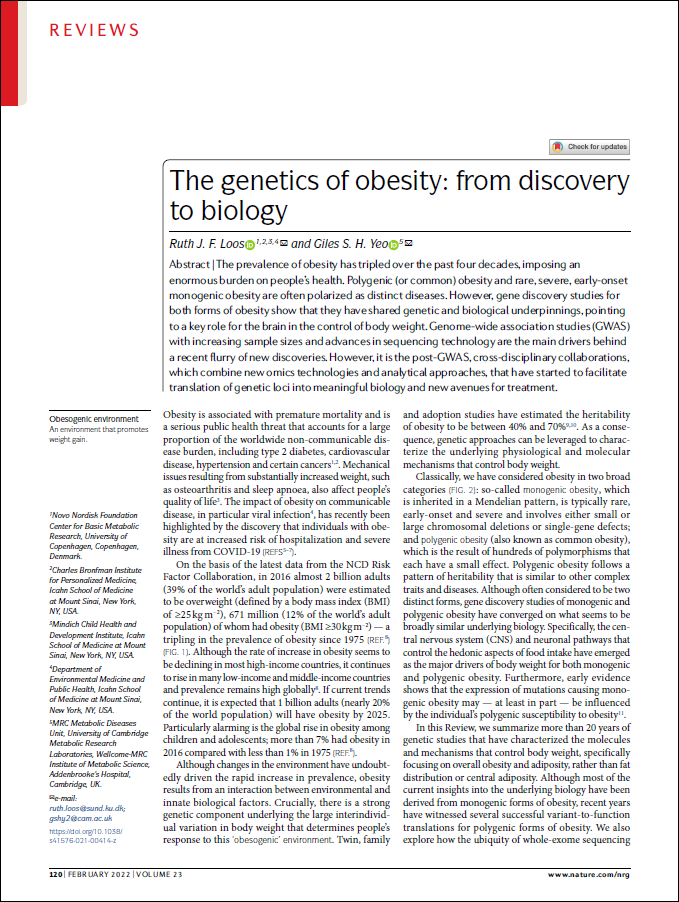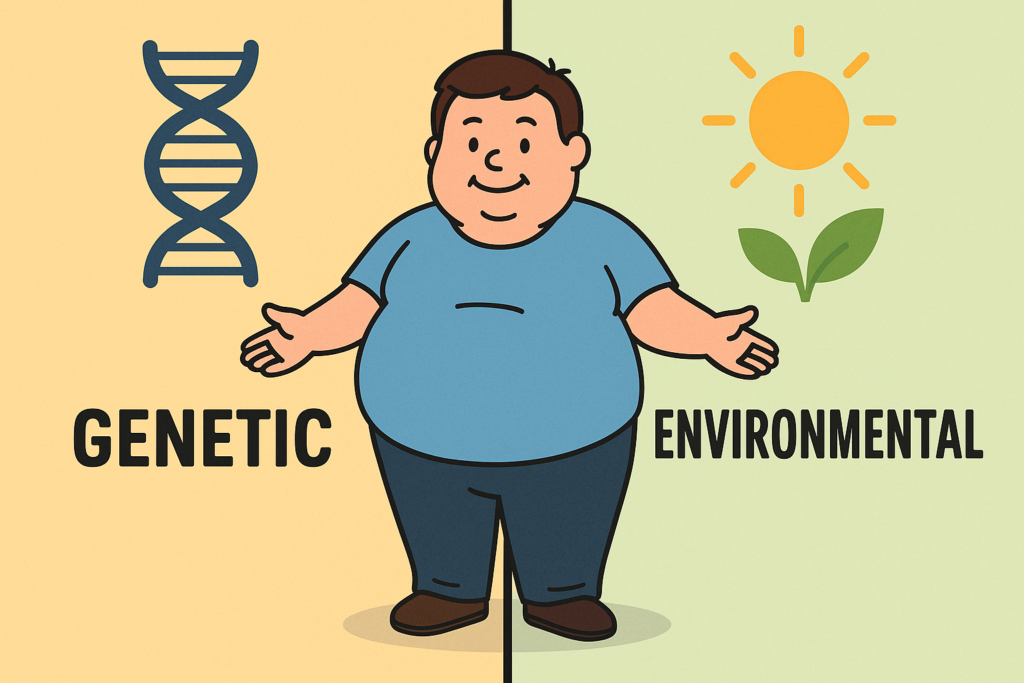Vocabulary-
GWAS – A Genome-Wide Association Study – a research method used to identify genetic variations (like single nucleotide polymorphisms or SNPs) associated with a specific disease or trait. It involves comparing the genomes of individuals with the disease or trait to those without it to find variations that occur more frequently in the affected group.
SNP – (pronounced “snip”) stands for Single Nucleotide Polymorphism. It is the most common type of genetic variation among people.

This scientific article examines the genetic underpinnings of obesity, classifying it into rare monogenic and more common polygenic forms. It notes that while these were initially seen as distinct, recent genetic discoveries highlight shared biological pathways, particularly involving the central nervous system and appetitive control. The text also discusses how advancements in genome-wide association studies (GWAS) have accelerated gene discovery for common obesity. Finally, it explores the potential for utilizing genotype information for both personalized treatment and predicting an individual’s risk for developing obesity, although the latter currently faces limitations in predictive accuracy.

How GWAS Work: A Simple Explanation
Genome-Wide Association Studies (GWAS) are research studies that scan the genomes of many people to find genetic variants (usually single nucleotide polymorphisms, or SNPs) that are associated with a specific trait, such as obesity. Here’s how they work:
Large Sample Collection: GWAS require large numbers of individuals, both with and without the trait (e.g., obese and non-obese), often numbering in the tens or hundreds of thousands.
Genotyping: DNA from each individual is scanned at hundreds of thousands to millions of SNPs across the genome.
Statistical Association: Researchers test whether any of the SNPs occur more frequently in people with the trait (e.g., higher BMI).
Significance Threshold: Because millions of SNPs are tested, a very stringent threshold (typically p < 5 × 10⁻⁸) is used to avoid false positives.
Locus Identification: SNPs that meet this threshold point to genomic regions (loci) associated with the trait. These regions may contain genes that play a biological role.
🧠 Key Concepts from GWAS of Obesity
Polygenic Trait: Obesity is influenced by many genes, each contributing a small effect.
Heritability: Estimated to be 40–70% for BMI, but GWAS currently explains only part of this (“missing heritability”).
Gene–Environment Interaction: Genetic risk may be amplified or mitigated by lifestyle (e.g., diet, activity).
Neurobiological Pathways: Many associated genes are involved in brain function, appetite regulation, and reward.
🧠 Example: SNP and Obesity
One of the most famous obesity-related SNPs is in the FTO gene:
SNP ID: rs9939609
A allele is associated with higher BMI and obesity risk.
Individuals with two A alleles (AA) can weigh several kg more than those with two T alleles (TT).
What is the FTO Gene?
Full name: Fat mass and obesity-associated gene
Location: Chromosome 16q12.2
Protein product: The FTO gene encodes an RNA demethylase, an enzyme that can modify RNA molecules (not DNA), influencing gene expression.
Expression sites: Highly expressed in the brain, particularly in the hypothalamus, which is involved in appetite regulation and energy balance.
🧬 What Do Obesity Genes Do?
While many loci fall in or near genes of unknown function, a significant number are involved in:
Appetite regulation and satiety:
e.g., MC4R, FTO, LEPR, POMC
Energy expenditure and thermogenesis:
e.g., UCP1, PRDM16
Adipogenesis and lipid metabolism:
e.g., PPARG, ADIPOQ
Brain function and reward pathways:
Many SNPs map to genes active in the hypothalamus and central nervous system.
Most of the heritability is due to common variants of small effect, meaning each gene adds only a small increase in obesity risk.
Summary
Is obesity genetic?
· Yes, it is influenced by inherited genetic factors.
Is it entirely genetic?
· No, environment and lifestyle also play major roles.
What has GWAS shown?
· Hundreds of loci associated with BMI; strongest is FTO.
How predictive are these genes?
· Individually weak; together still modest but improving with polygenic scores.
Audio Overview (Google NotebookLM)
(29 minutes 49 seconds)

